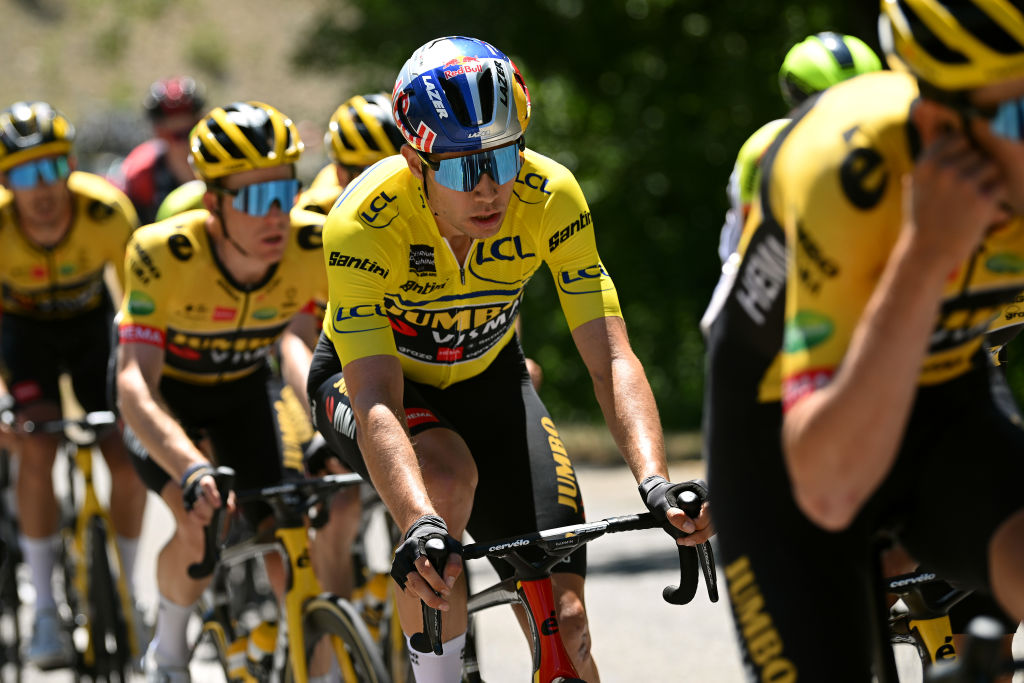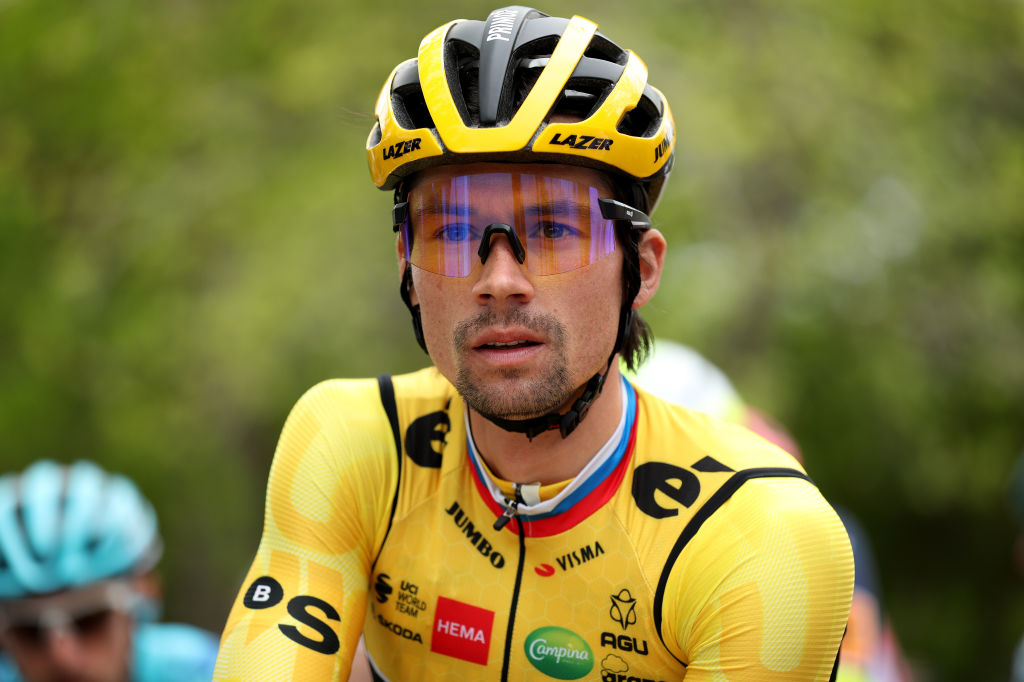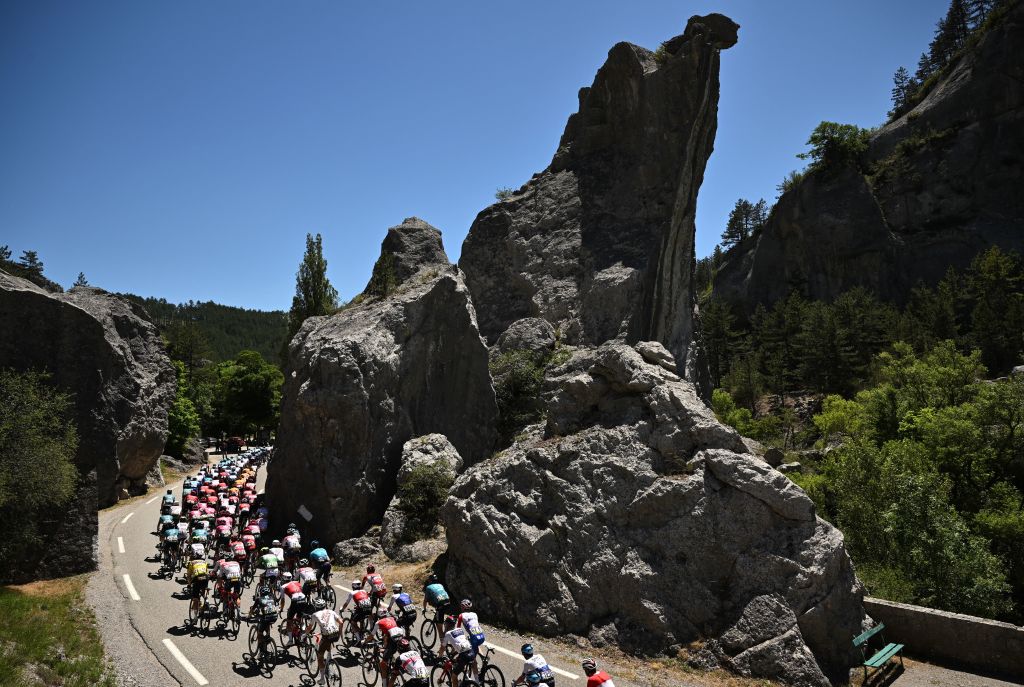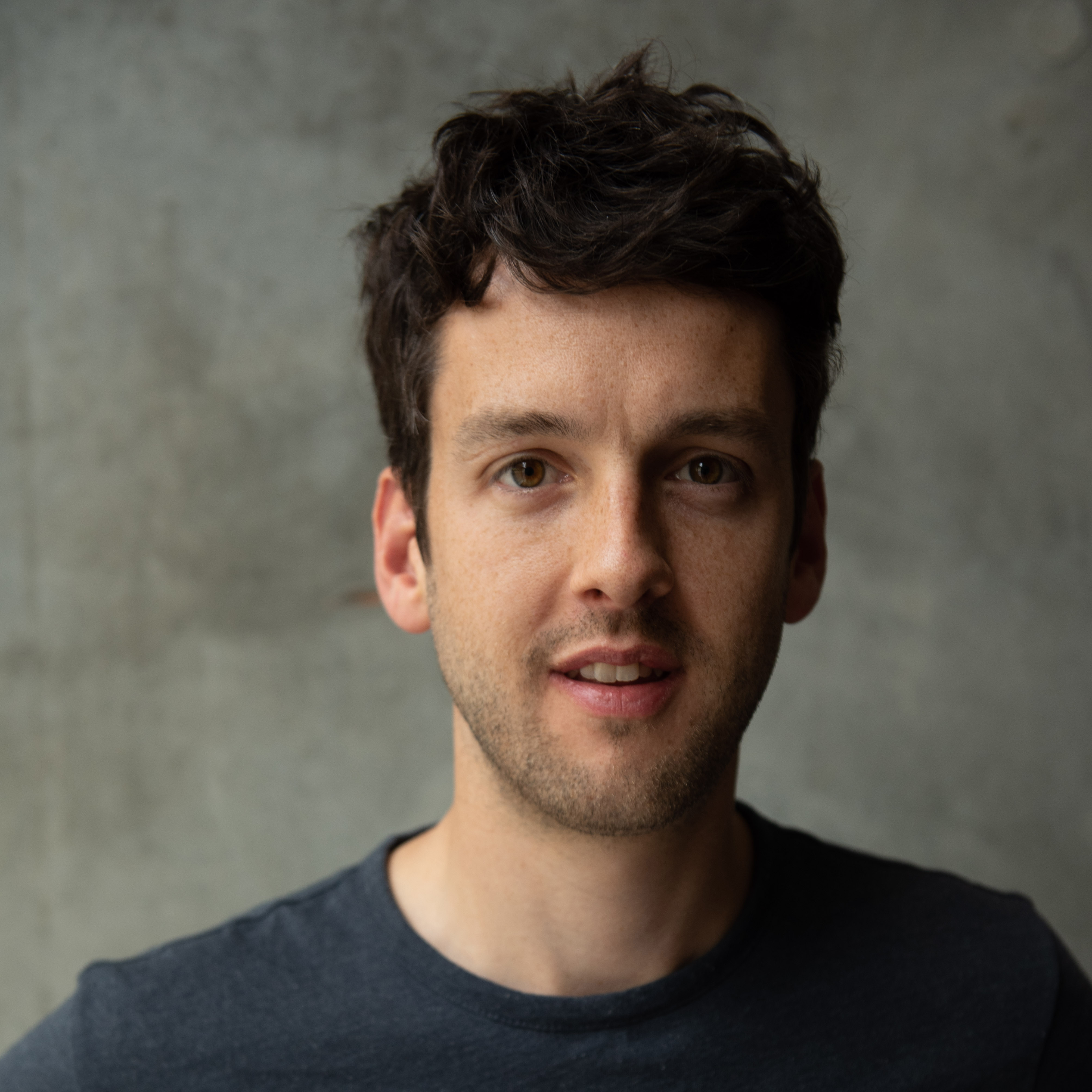First big Tour de France test as Dauphiné hits the mountains - Preview
Can Jumbo-Visma be undone on back-to-back summit finishes?

The 2022 edition of the Critérium du Dauphiné is, by the race’s own standards, relatively light on mountains, but the peaks of the Alps swing into view this weekend with two short and potentially explosive stages.
Although the overall complexion of the race has already been shaped by the stage 4 time trial, the overall title will be decided this weekend, and it’s where a host of Tour de France hopefuls will be truly tested for the first real time in the build-up to the Grande Boucle.
Until now, we’ve had a Dauphiné in which all six stages could feasibly have been won by Wout van Aert. He has taken two, and come agonisingly close to winning three more for Jumbo-Visma.
It’s difficult to design a route for any race that limits Van Aert’s chances, and his victory over Mont Ventoux at last year’s Tour makes overall victory a possible scenario. His place at the top of the standings with a lead of over a minute only adds to speculation of a GC bid.
However, the Belgian champion has dulled his climbing focus this season as he prepares for a Tour de France chasing stages and the green jersey, rather than simply supporting Primoz Roglic’s tilt at the yellow jersey. And while Van Aert’s in yellow here, he has ruled out defending it and made clear that any further role he plays in the race will be in aid of transferring it to a teammate.
That should, on paper, mean Roglic, winner of the past three Vuelta a Espana, as well as a host of week-long stage races, the Jumbo-Visma team leader. It could also mean Jonas Vingegaard, the Dane who grasped the opportunity of Roglic’s exit from last year’s Tour to finish runner-up himself, gets a chance.
Roglic starts as the best of the pre-race favourites. He is third overall, 1:06 down on van Aert, with only Matteo Cattaneo (QuickStep-AlphaVinyl) ahead of him by three seconds. All the other overall contenders are much further behind the Slovenian. Vingegaard is next best, 30 seconds in arrears.
The latest race content, interviews, features, reviews and expert buying guides, direct to your inbox!
It’ll be fascinating to see how Jumbo-Visma play their cards this weekend, and it should provide some clues ahead of the Tour. Whereas they’ve gone into the past two Tours in full support of Roglic, this time they go in with two GC leaders and Van Aert chasing his own goals, including the green points jersey, and so perhaps laying a claim to support of his own.
For all their dominance in the stages and standings, Jumbo-Visma have at times appeared slightly stretched at the Dauphine, and this weekend should provide further evidence of whether all these plates can be spun in July. Chiefly, it’ll be interesting to see how creative they are tactically, or whether they simply try to dictate and tow Roglic to the top of the final climbs.
Roglic question marks

Adding to the intrigue is Roglic’s own form.
30 seconds clear of any other pre-race contender and 43 seconds clear of any of them that aren’t on his team, it looks like business as usual for the rider who has dominated so many week-long races in recent years.
And yet, there have been flickers of doubt, fueled by the fact that this is his first race since early April and he suffered a serious knee injury in the interim.
The uphill finish on stage 3 would ordinarily be his bread and butter but it was Van Aert who came back to sprint it out, while Roglic slipped through the bunch and finished 12th. In the time trial, he put time into all his rivals, including Vingegaard, who’s no slouch against the clock. However, they perhaps weren’t quite as decisive as expected, and the 42-second gap to the winner Filippo Ganna was a touch more than perhaps expected of the discipline’s Olympic champion.
Roglic himself revealed he’s “definitely not at my best”, and while the start of the Tour remains almost three weeks away, any sign of weakness will be seized upon in the pre-Tour narrative, enshrining Tadej Pogacar as an even bigger favourite.
For Roglic’s rivals, then, there is room for optimism, even if they’ll have to lay it on the line. And that’s perhaps their best approach. Roglic’s reputation of not being able to finish off big French races may be a tad unfair but the psychological hurdle may well be very real indeed.
Cattaneo is the rider who sits in between Van Aert and Jumbo’s two leaders, three seconds ahead of Roglic. The Italian had a storming time trial but is no slouch uphill, either. It’s a massive stretch to see him winning the Dauphiné but he could yet dig in and grind out a place in the top 10 or even five.
Ethan Hayter (Ineos Grenadiers), fourth overall, is a similar type of rider as Van Aert and in a similar situation. Ineos Grenadiers' true leader appears to be Tao Geoghegan Hart, who lies seventh, 49 down on Roglic, and just behind a particularly dangerous-looking Damiano Caruso, whose Bahrain Victorious teammate is already a further 40 seconds back.
The ever-improving all-rounder Matteo Jorgenson (Movistar) kicks off the group of riders two minutes down on Van Aert in ninth place, but Ben O’Connor (AG2R Citroen) 10 seconds behind in 10th, looks a likelier source of fireworks. Likewise Wilco Kelderman lies 11th but must be running on fumes after the Giro and David Gaudu (Groupama-FDJ) in 12th, already a stage winner, is one of the strongest and most in-form climbers in the field. Finally, Enric Mas (Movistar) has the class but suffered a nasty crash on Thursday.
Although Brandon McNulty is a fair way off and his UAE teammate Juan Auyso had to pull out through illness, most of the aforementioned contenders are within half a minute of each other, and all within 1:11 of Roglic, meaning the Dauphiné is far from done and dusted.
The weekend stages

In terms of the terrain Jumbo-Visma’s rivals have at their disposal, both Saturday and Sunday’s stage clock in at the short end of the mountain stage spectrum, both under 135km.
Such stage lengths have been known to produce unhinged days of racing, and when you consider both of these start with major climbs, the chance of spectacle is raised yet further.
The stages are quite different in their make-up. Saturday’s stage features the bigger, higher mountains, but is somewhat lacking in steep gradients, while Sunday’s unfolds at much lower altitude but packs a brute of a finish up to Plateau de Solaison.
Saturday starts out from Saint-Chaffrey and immediately scales the Col du Galibier. This is the ‘easier’ side of the Alpine giant, and while it’s only 5.1%, it’s 23km long and rises to 2642 metres, where the oxygen is hard to come by.
They descend the way they most often come up in the Tour, via the Col du Télégraphe, before tackling another climb of similar proportions - the Col de la Croix de Fer rising at a more irregular average gradient of 5.2% over 29km and breaking the 2000-metre barrier once more.
A staggered descent takes them to the foot of the final climb to Vaujany, a typical ski resort-bound switchback climb, which averages 7.2% but only lasts for 5.7km, hence its category-2 status. It may pale in comparison to the mountains that go before but after such a wearing-down process it will provide a punchy and explosive finale.
Sunday’s stage starts out from the gun with the category-1 ascent of the Col de Plainpalais - 8.8km at 6.5% - before a cat-3 climb makes way for an extended stretch in the valley. The cat-1 Col de la Colombière - 11.8km at 5.8% - is where things start to get serious, but the final climb to Plateau de Solaison is another beast and the toughest test of the Dauphiné by far.
With an average gradient of 9.2% over 11.3km, it’s a steep and unforgiving climb and has the potential for real damage.
It has history with the Dauphiné, too. Back in 2017, the race was turned on its head there on the final day, with Jakob Fuglsang snatching the yellow jersey from Richie Porte. The Australian was reeling at the finish and it didn’t help that he felt his old ally Chris Froome had helped twist the knife.
Will we see a repeat of that drama on Sunday afternoon?
Patrick is a freelance sports writer and editor. He’s an NCTJ-accredited journalist with a bachelor’s degree in modern languages (French and Spanish). Patrick worked full-time at Cyclingnews for eight years between 2015 and 2023, latterly as Deputy Editor.
